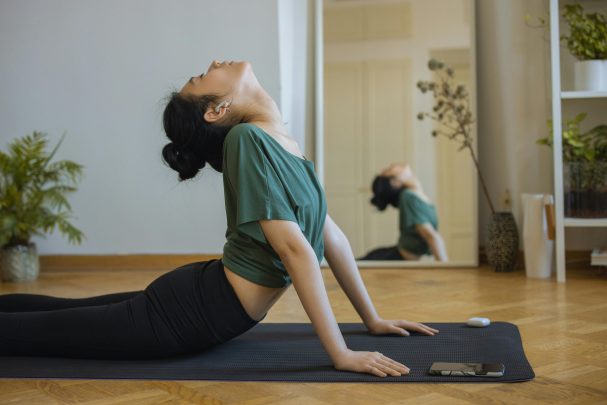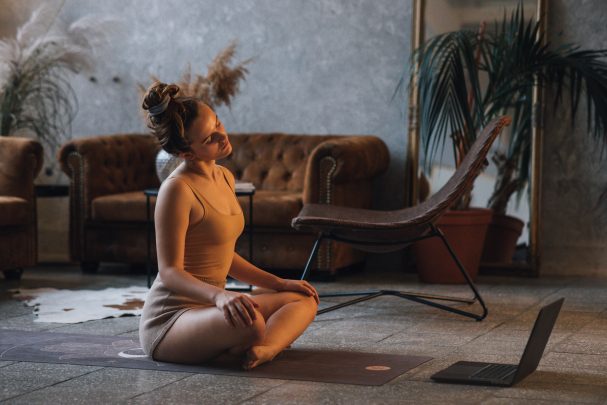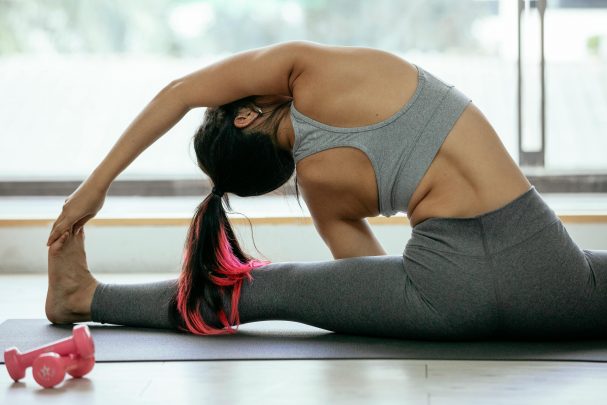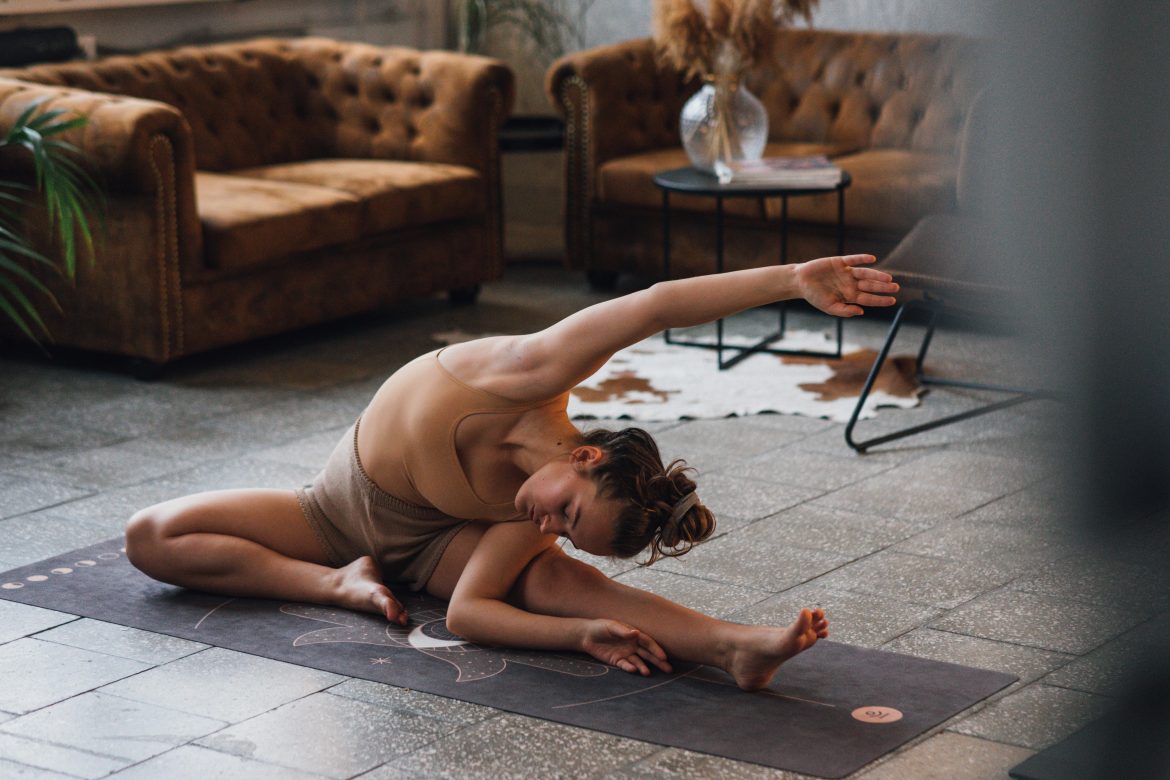Pilates is one of the best ways to strengthen your core and centre your mind. It’s also one of the easiest exercises to do at home! And no, you don’t need to invest in a reformer machine or a ton of equipment. Staring pilates at home requires a yoga or pilates mat, some motivation, and a handful of easy-to-get tools.
Here’s how you can start your Pilates journey at home.

Pexels
What is Pilates?
Like yoga, pilates is a low-intensity workout that focuses on a mind-body connection. The difference? It also focuses on strength, stability and highly concentrated movements that go beyond stretching.
Most pilates movements focus on building core strength, as well as back and glute strength. Believe it or not, the low intensity of these movements pushes your muscles a lot – making it one killer workout.
The best part of pilates though? All you need is a mat, and a walkthrough video to get you through the session.
ALSO SEE: Pilates vs. Yoga: what should you go for?
What you need

Pexels
When it comes to mats, you have two choices: a yoga mat, which is generally thin, or a pilates mat, which is thick and plush-like. Either is fine, but if you plan to take up yoga as well and don’t want too much equipment lying around, opt for the yoga mat. Balance is easier on a thin mat and it’s better for your joints long term.
Once you’ve got your mat, you need to make sure you’ve got plenty of space to move around. You’ll stretch both your arms out, as well as your legs. If you can, opt for a quiet space that you can turn into your “pilates space” when it’s time to work out.
Now you can choose how you’ll begin your pilates movements. You can either follow guided YouTube videos or use an app. But, to be honest, opt for YouTube – it’s free and easily accessible.
Some of the best YouTube channels for Pilates are:
Lottie Murphy
Move with Nicole
Blogilates
Tory Rivera
Kristen Antzoulis
If you were on TikTok last year, you’ll remember those “life-changing” wall pilates videos. Yes, there are a lot of movements that involve using a wall, and they can work. Just remember that, like any other form of exercise, consistency is key and nothing on is the key to a healthy lifestyle – a well-rounded, balanced diet and listening to your mind and body is just as important.
What about props?

Pexels
If you’ve done some research on Pilates, you’ve probably seen that a lot of movements involve resistance bands, and in some cases an exercise ball. You can purchase these when you buy your mat, or once you’ve progressed enough to need some added weight or resistance.
Eventually, you can also throw in some light weights, or use filled water bottles (yes that works!).
Be careful
Starting any at-home workout is fun and easy, but you should also tread with caution. If you have any underlying issues, such as joint problems, a back injury, or any injury for that matter, you should seek the advice of your healthcare professional before starting Pilates, or any other home-based exercise regime.
While pilates is a low-intensity exercise, it can, and does, put strain on your joints and back.
Once you’ve sought the advice of your doctor, going to an in-person pilates class might be a good idea, at least for a few sessions, so the instructor can help you identify safe movements that won’t damage or strain any pre-existing issues.
ALSO SEE:
Featured Image:

